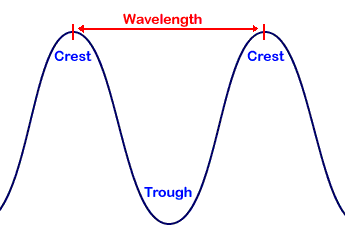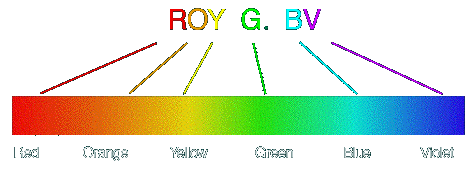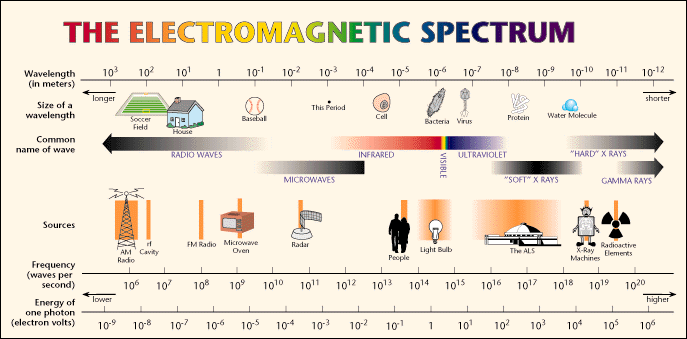
The primary means by which we learn things in astronomy is through the study of radiation. In the solar system, we study reflected sunlight as well as an object's intrinsic radiation, and this tells us all kinds of information about an object (such as...)
Light, or more specifically visible light, is what we can sense with our eyes. There are other kinds of radiation that we cannot see with our eyes, but we can build detectors that are sensitive to those other kinds of radiation. More about this shortly.
Light (or radiation) is thought of as both a wave and a particle. It is caused by oscillating electric and magnetic fields, which propagate a disturbance through space (like water waves on a pond). This is how light behaves as a wave. These waves carry energy. Sometimes light behaves more like a particle than a wave. These particles, or discrete packets of energy, are called photons.
In the wave model, we can characterize radiation by its wavelength, as shown below.

Shorter wavelength radiation is more energetic, while longer wavelength radiation is less energetic.
Light gets weaker as it travels farther from its source; in fact, it decreases by a factor of distance squared (if you go twice as far from an object, it will appear 4 times dimmer). In this sense, light is analogous to gravity, which also gets weaker as distance increases.
The electromagnetic spectrum is defined as the entire range of electromagentic radiation. This includes visible light, as well as those forms of radiation much more and much less energetic than visible light.
Visible light can be divided up into its component colors using a prism (or water droplets, which produce a rainbow). The visible portion of the electromagnetic spectrum looks like this:

There are other components of the EM Spectrum that our eyes are NOT sensitive to, namely:

Some of these forms of EM radiation are harmful to human beings; some are not. Can you guess which ones might be harmful?
Celestial objects look very different depending on what wavelength you study them in. That's because different wavelengths, or different kinds of electromagnetic radiation, are produced by different phenomena. This is what the Sun and the Moon look like when you study them at different wavelengths.